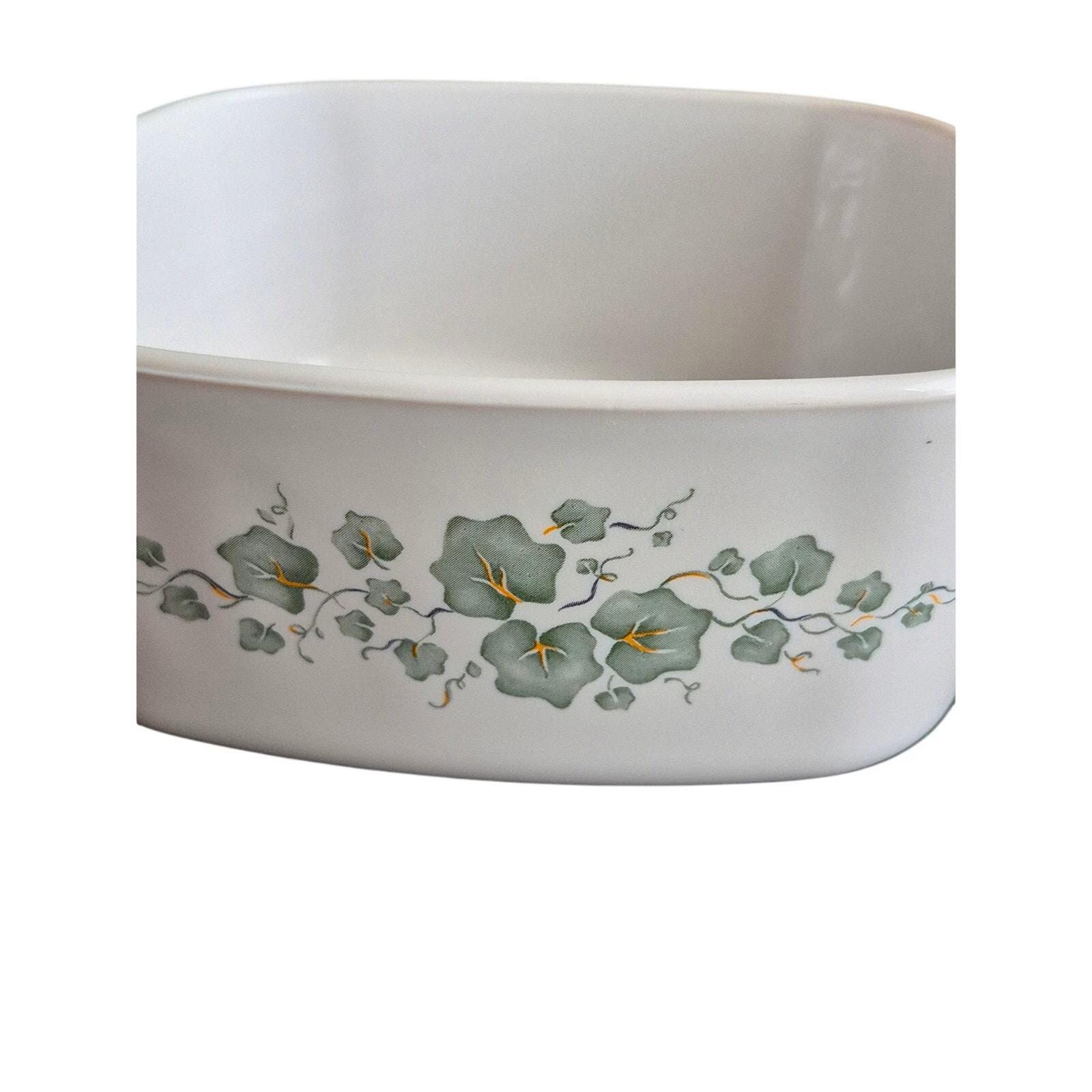A Kitchen Classic: The History of CorningWare
I recently found a CorningWare casserole at an estate sale. It is white with soft green leaves. The pattern is called Callaway Ivy. This vintage CorningWare piece brings timeless charm to the kitchen. It’s a classic casserole dish made from original Pyroceram, a heat-resistant material. The dish dates back to the 1980s–1990s and was proudly made in the USA. It’s perfect for baking, serving, or display—and a wonderful sustainable choice for vintage lovers and everyday cooks alike.
A Happy Accident That Changed Cooking
CorningWare’s story actually began by accident. In 1953, Dr. Donald Stookey, a scientist at Corning Glass Works, overheated a piece of glass in the lab. Instead of melting or breaking, the glass remained strong and intact. This new material, called Pyroceram, was incredibly resistant to heat, cold, and sudden temperature changes. Originally designed for military use, it didn’t take long for Corning to realize Pyroceram’s potential in the kitchen.
Born to Serve in the Kitchen
By 1958, CorningWare cookware was available in stores. Its standout feature was its versatility—it could move seamlessly from freezer to oven to table without cracking or fuss. The first pattern to hit the shelves was the iconic Blue Cornflower, but soon other patterns became favorites. One such beloved design is Callaway Ivy, with its soft green leaves that bring a calm, natural touch to any kitchen.
Patterns That Tell a Story
Over the years, CorningWare offered dozens of beautiful patterns:
- Spice of Life with herbs and vegetables
- Wildflower featuring bright orange and yellow blooms
- Sleek and modern French White
- And many more, including Shadow Iris and Country Festival
Among these, Callaway Ivy remains a favorite for its timeless, gentle green leaf design.
Built to Last — and Then Some
Vintage CorningWare isn’t just pretty—it’s tough. It resists scratches and stains, and it handles heat and cold like a champ. You can bake in it, reheat in it, serve in it, and even hand it down through generations. Collectors often seek out early pieces, especially those with glass lids or sloped sides. If you find a dish stamped “Made in USA” on the bottom, you’re likely holding a quality vintage treasure.
Why CorningWare Still Holds a Special Place
So, why do we still love CorningWare today? Because it works. It looks great. It lasts forever. Plus, buying vintage cookware helps keep these sturdy pieces out of landfills, making it a planet-friendly choice. There’s also a bit of nostalgia on the table — a connection to kitchens past, to family meals, and cozy homes.
CorningWare Today
Though the original Pyroceram line ended in 2000, CorningWare’s fans weren’t ready to say goodbye. Some designs have made comebacks, but collectors agree—the vintage originals, especially patterns like Callaway Ivy, carry the most soul and character.
Final Thoughts
Whether you grew up with CorningWare or just found a cherished piece like I did, this cookware is more than just kitchenware. It’s a memory, a conversation starter, and a symbol of home. With patterns like Callaway Ivy, it brings warmth and beauty—leaf by leaf.
Sources
- Corning Museum of Glass – “CorningWare’s Story.” www.cmog.org
- Smithsonian Magazine – “How a Lab Mistake Made CorningWare.” www.smithsonianmag.com
- Kitchens Past – “Vintage CorningWare Guide.” www.kitchenspast.com

